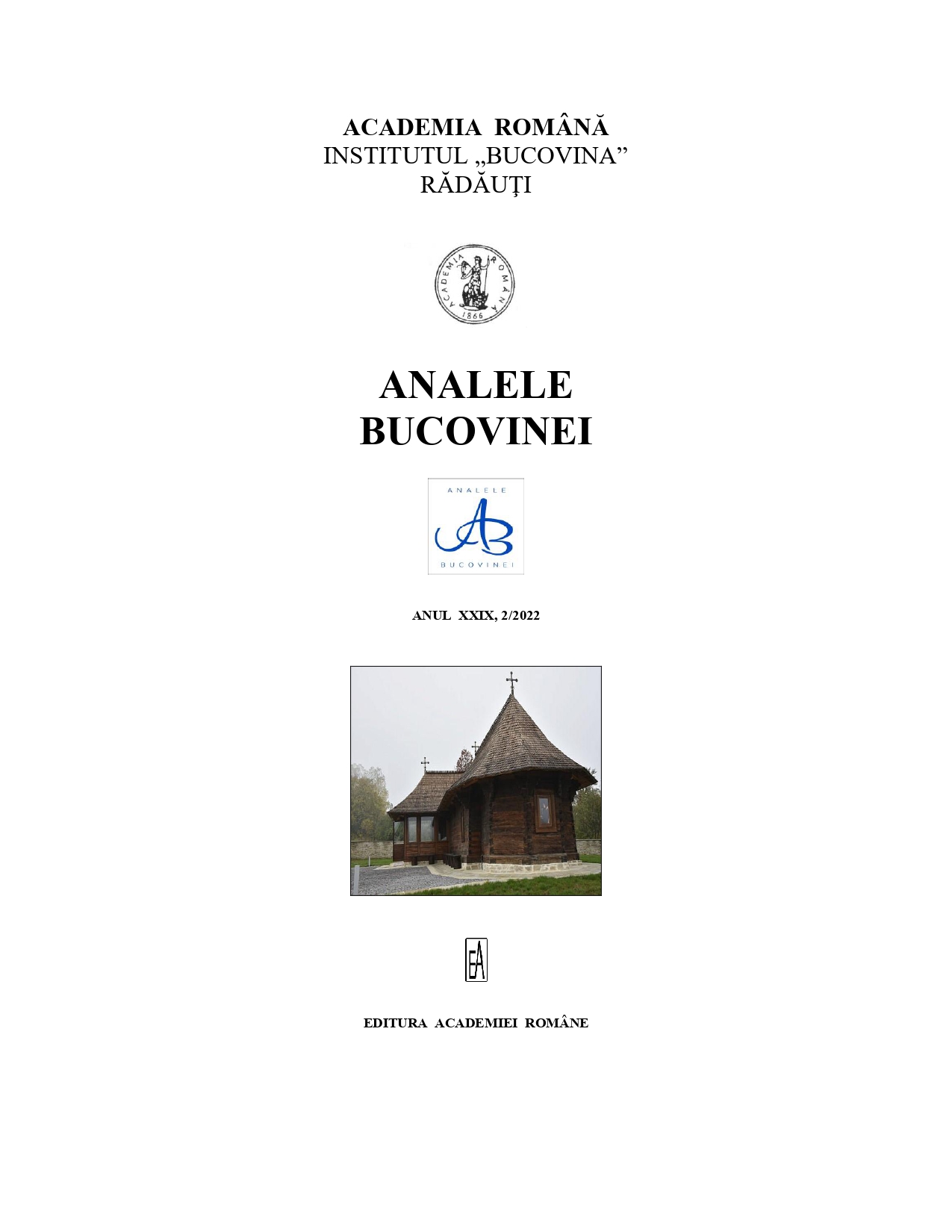PARTICULARITĂȚILE INCLUDERII BASARABIEI ȘI A NORDULUI BUCOVINEI ÎN COMPONENȚA UNIUNII SOVIETICE
The Peculiarities of the Inclusion of Bessarabia
and of the Northern Part of Bukovina in the Soviet Union
Author(s): Serghei HakmanSubject(s): Politics / Political Sciences, History, Governance, Local History / Microhistory, Recent History (1900 till today), Government/Political systems, Military policy, WW II and following years (1940 - 1949), History of Communism, Fascism, Nazism and WW II, Inter-Ethnic Relations, Politics of History/Memory, Politics and Identity, Peace and Conflict Studies
Published by: Editura Academiei Române
Keywords: Bukovina; Bessarabia; Soviet Union; 2nd World War; territorial occupation;
Summary/Abstract: The author considers a set of military propaganda measures taken by Soviet troops to seize the territories of Bessarabia and Northern Bukovina. Regular units of the USSR Armed Forces which were united in a specially created Southern Front, whose troops were concentrated on the border with Romania, were used to achieve this goal.On June 28, 1940, Soviet troops crossed the Dniester and entered Bessarabia and Northern Bukovina. Romanian units were ordered to withdraw in an organized manner. The Red Army exceeded the agreed rate of evacuation of Romanian troops, violated the line of demarcation, which led to local incidents. There were cases of disarmament of Romanian soldiers. There were armed clashes, a result of which were loses of both sides, including killed. In turn, the Red Army also felt hostility, encountering minefields, anti-tank barriers, trenches, mined or dismantled railways and bridges. Both Soviet and Romanian military units took certain military-administrative measures against the civilian population, which had different motives and forms of manifestation. The low level of morale of the retreating Romanian army led to the disintegration of entire military units, whose soldiers dropped their weapons and fled home. At the same time, there were serious violations of military discipline among the Red Army, for which the soldiers were punished, including the death penalty.Immediately after the Red Army entered Bessarabia and the Northern part of Bukovina, a huge Soviet propaganda machine began to operate. A large number of newspapers and special literature were distributed among the population and soldiers; and posters and slogans were hung in the streets and houses. Politicians of the Red Army organized rallies and demonstrations to awaken in the souls of the Bessarabians and Bukovinians “love for the liberators and a sense of confidence in the Soviet authority”. The annexation of Bessarabia and Northern Bukovina by the Soviet Union in June – July, 1940 can be considered a well-thought-out and carefully prepared political-diplomatic and military-propaganda campaign. These territories were occupied by the Red Army according to all the rules of military art (all components of the military operation were used: military force, local military pressure, military intelligence, propaganda and propaganda service), thanks to which the USSR achieved its goal.
Journal: ANALELE BUCOVINEI
- Issue Year: 59/2022
- Issue No: 2
- Page Range: 519-535
- Page Count: 17
- Language: Romanian

